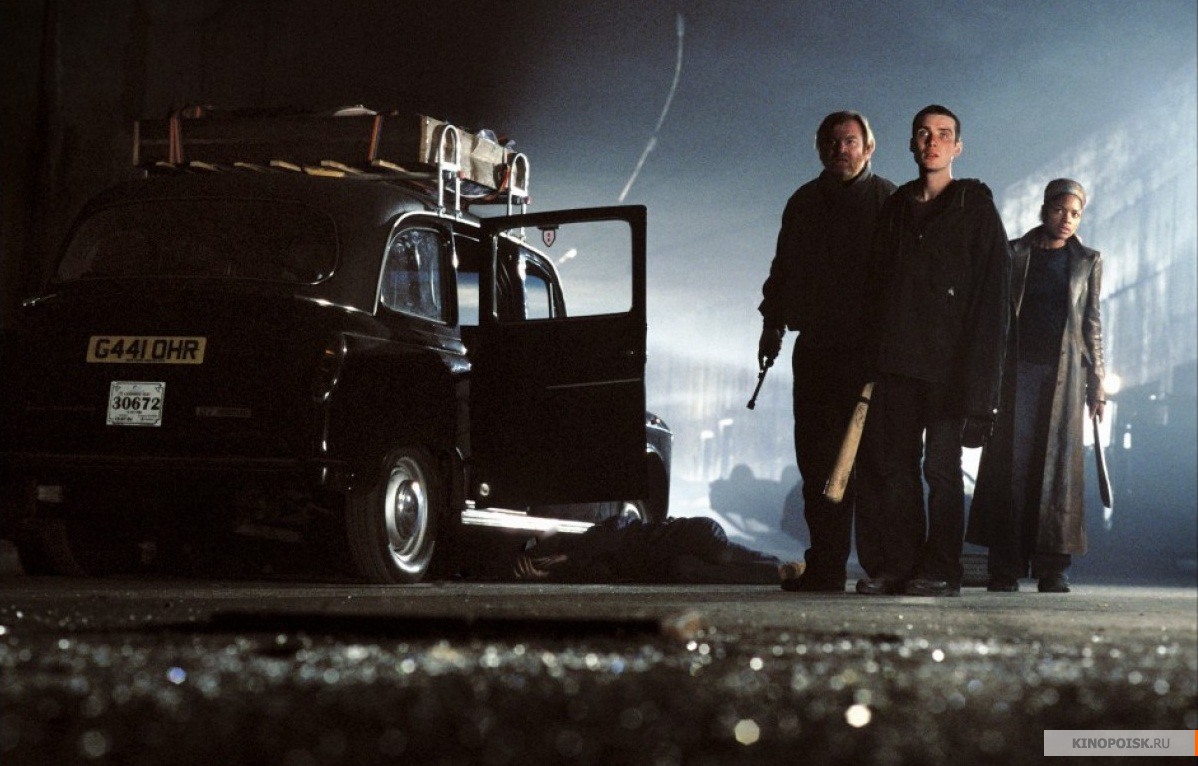It may not seem like it now, but back in the late ’90s to early into the next decade, zombie movies just weren’t that popular. In the “modern age” of cinema, a lot of the classic zombie movies of yesteryear were considered campy or cheesy, lacking a truly gripping, realistic sense of terror. Hell, the last classic “zombie movie” that had come out at that point was Army of Darkness, a film that (while fantastic), reviled in its campiness and devil-may-care attitude. Zombies were understood more as slow, shambling societal metaphors than anything really packing a true sense of fear.
Danny Boyle presumably saw this trend as well, and said, “Fuck all that noise.”

28 Days Later was unleashed upon the Earth on November 1st, 2002, initially just showing in the UK but eventually gaining enough traction to see a world-wide release in June of 2003. Boyle’s vision was unlike anything that anyone had ever seen before. Gone were the shambling zombies of old: now, we got “rage zombies,” people who were infected with a virus that caused them to turn into rage-filled, bloodthirsty maniacs. Being technically still alive meant that these fuckers could run, and fast.
It’s hard to understate how important this one simple element changed everything about the genre; sprinting zombies finally shocked back a sense of urgency into our characters. In the world of 28 Days Later, you were never safe: if one of those things heard you, they wouldn’t hesitate to come barreling for you, hurtling themselves through windows, doors, and across streets to find you and tear you into pieces. This was some serious adrenaline-pumping action, and it was goddamn terrifying. I still remember the first time I saw this film – it was truly a game-changer.
The legacy that Danny Boyle’s sprinting zombies left behind can still be seen today: the Dawn of the Dead remake, [REC], World War Z, I Am Legend, the entire Resident Evil film series and The Walking Dead TV show. After 28 Days Later, nothing would ever be the same again for zombie movies. The ante had officially been upped, in a big, big way: your zombies used to be people, and people have muscles, which help them run, to chew your face off.

However, it’s not just the rage zombies that helped this film make its mark: another major aspect was creating characters that had actual, well, character. While the Romero zombie movies are certainly classics in their own right, his characters are fairly one-note (with the exception of Ben, because Duane Jones is a badass); in 28 Days Later, you get a number of complicated, layered characters, from all different ages, races, and walks of life.
As I’ve stated before, believable and sympathetic characters are one of the surest ways to make your movie gripping and 28 Days Later features characters that I still remember to this day: Cillian Murphy’s Jim, coming to terms with his new reality but still optimistic and willing to fight to survive; Naomie Harris’s Selena, whose journey for survival has made her cynical and untrusting of others; Brendan Gleeson’s Frank, whose open-hearted personality shines as a beacon for the gang, including his young daughter, Hannah (Megan Burns).
These are all characters who you come to care for, who you want to see overcome the impossible and find the mysterious safe-haven in Manchester. Without spoiling too much for those who somehow haven’t seen this movie (Seriously, watch it! Please!), their various worldviews are put to the test as they make their way across Britain, and one of the most compelling parts of the film is watching them grow as people and as friends despite the horrors – both from the rage zombies and other humans – around them.

The cinematography is also breathtaking throughout the entire film, ranging from spectacular action set pieces to somber, chilling wide shots. The feeling of desolation and dread as Jim first walks through the empty streets of London, alone, is one of the most memorable sequences from any horror film from the last two decades – it not only reinstates our innate fear of the unknown and the abandoned, but also proves that you don’t need any dialogue to create a captivating scene in a film. During this nearly five minute sequence, you’re right there with Jim: danger could be anywhere. His fear and disbelief mirrors our own; it immediately makes you wonder, “What the hell would I do in this situation?” (Note: If you’re able to see this movie on a big screen, do it – this moment becomes absolutely breathtaking.)
Almost fifteen years later, 28 Days Later remains one of the greatest horror films ever made: a revival of the zombie genre, a shot of adrenaline to a previously-complacent horror film world, and one of my favorite films, horror or otherwise, of all time.

 PopHorror Let's Get Scared
PopHorror Let's Get Scared



